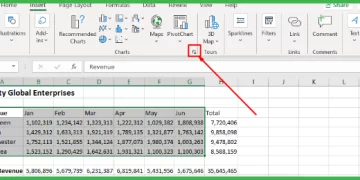
Create Your Own Histogram In Excel
Excel’s versatility in handling data makes it a leader among data management tools.
Now imagine transforming all that statistical data into a picture for more enhanced visualisation.
This is where histograms come in.
Professionals from industries across the globe rely on histograms to make sense of patterns and trends.
Histograms and all the Excel knowledge you might need are covered in our Excel training courses.
Access all the information on our website and pick the best one for you.
What Are Histograms?
A histogram chart shows a visual representation of the frequency distribution of a data set.
Too complex?
Simply put, a histogram is like a bar chart. Even if you’ve not made one, you’ve probably seen it at some point in life.
In a histogram, each bar or column represents the frequency rate of characteristics within a specific range.
Hence, we can conclude that a histogram graphically depicts the recurrence of elements within consecutive, separate intervals, more appropriately known as bins.
For instance, you can create a histogram chart to determine the number of customers with positive reviews between 1 and 10, 11 and 20, 21 and 30, etc., or customer response times in intervals of 1–5 minutes, 6–10 minutes, 11–15 minutes, and so on.
Here’s a demonstration of an Excel histogram:
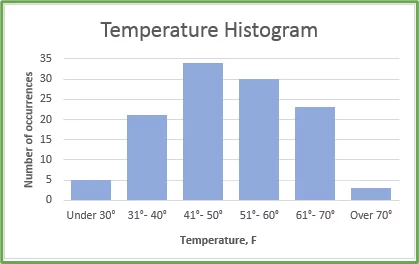
How To Create A Histogram In Excel – Simple Example
There are two ways you can create an Excel histogram. The first is by using Excel’s embedded histogram chart, and the other is with the help of formulas.
The embedded histogram chart can be found in Excel 2016 and all later versions. So, if you have an earlier version installed on your device, choosing the second method would be more suitable.
How To Create An Excel Histogram With The Histogram Chart
The following data is a record of the test scores of 30 students. We want to see how many students scored low, mid, and high marks.
To do this, we’ll create a histogram dividing test scores into intervals of 10, ranging from the lowest marks (40) to the highest (100).
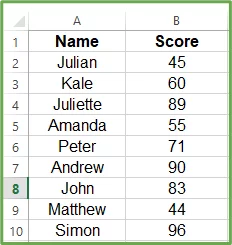
To create a histogram from this input range:
-
- Highlight the range A1:B31.
- Next, go to Insert > Insert Statistic Chart > Histogram.
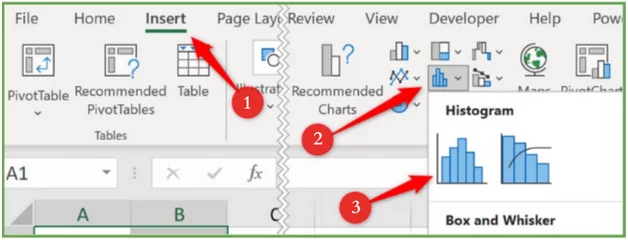
-
- The following histogram will appear on your screen, grouping the 30 scores into four ranges/bins.
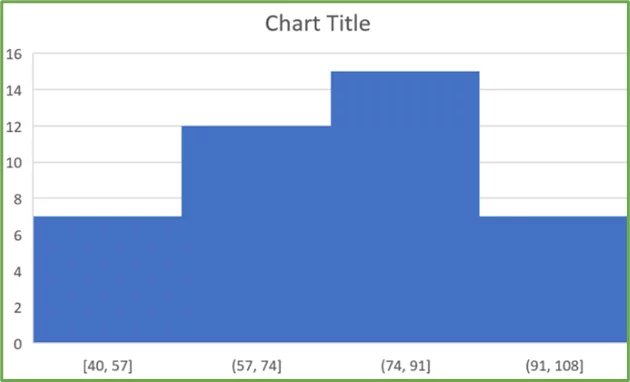
-
- As you can see, the data is somewhat jumbled and does not showcase the results we wanted. This means it’s time to edit the vertical and horizontal axis. To do this, you’ll have to:
-
-
- Right-click on the x-axis and select Format Axis from the menu box.
-
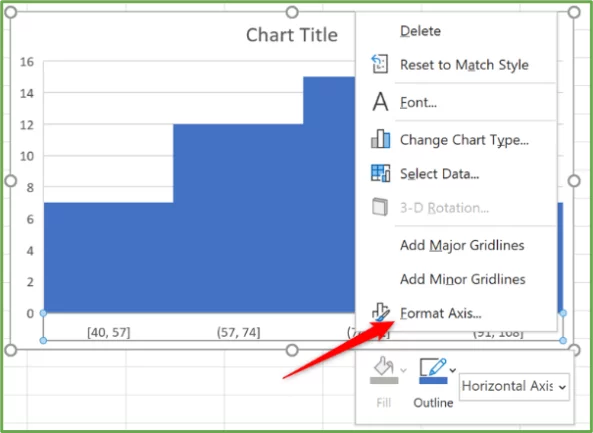
-
-
- Go to the Axis Options category and enter 40 in the box beside the Underflow bin space and 90 in the box beside the Overflow bin (40 indicates the range from which the histogram bins will start, and 90 indicates the final bin, which will include scores of 91 and above).
- Enter a bin width of 10. This means that the bins will be created in intervals of 10.
-
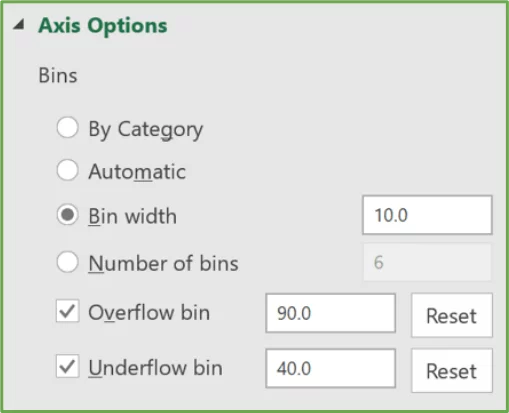
This is what your renovated histogram will look like.
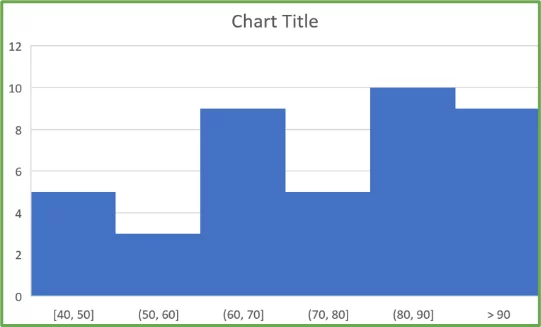
Note: It’s vital to understand that if a score resembles a bin’s upper value, it will be recorded in that bin only. For instance, a score of 80 will fall under the 70-80 bin range instead of the 80-90 bin range.
How To Create An Excel Histogram With Formulas
This method is compatible with all versions of Excel and initially uses a column chart, which is then formatted to match the conventional histogram.
We’ll use the same data tab, but before diving into the steps, we have to create a data source for the histogram.
This can be seen in the following image. The bins are entered into cells G2:G7, and the COUNTIFS function is implemented to record the frequency of scores for each bin.
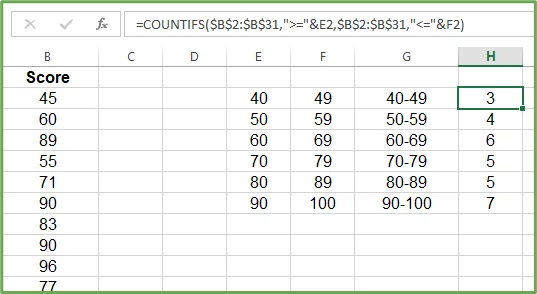
The values in cells E2:F7 highlight the upper and lower range of the bins.
Before we unveil the steps to create our Excel histogram, we’ll hide these two columns because they serve no other purpose than to support the COUNTIFS function
Feel free to note down this COUNTIFS function (=COUNTIFS($B$2:$B$31,”>=”&E2,$B$2:$B$31,”<=”&F2) and then proceed with the steps mentioned below:
-
- Mark the cells G2:H7
- Go to Insert > Insert Column Chart > Clustered Column. The following chart will be inserted into your Sheet.
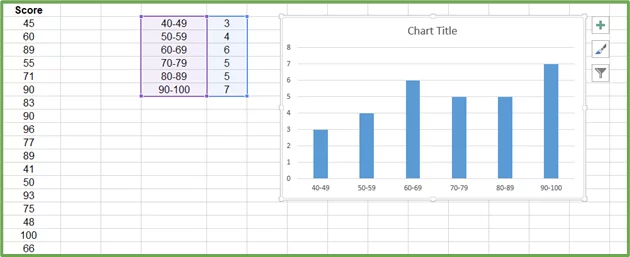
-
- All that’s left is making some general improvements in the chart and tightening the gaps between the columns. Here are some suggestions you can incorporate into your histogram dialogue box:
-
-
- Change the chart title to Exam Score Distribution by clicking the Chart Title.
- Format the columns to the colour of your choice.
- Remove the y-axis by selecting the horizontal axis and pressing Delete.
- Remove the gridlines by clicking on them and pressing Delete.
- Add frequency labels above each column.
-
Your semi-finished histogram will look somewhat like this after these changes.
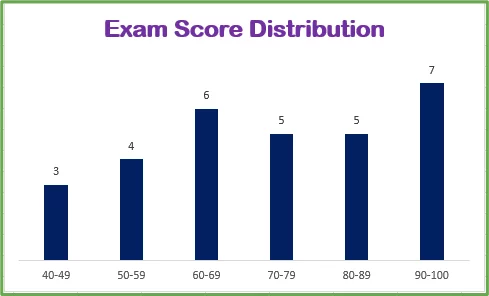
-
- Now, to eliminate gaps between columns, right-click on a column and select Format Data Series from the menu box.
- Hit the Series Options section and bring the Gap Width to 0.
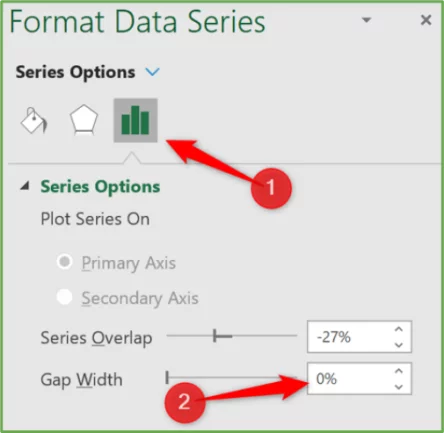
Without the gaps between the columns, your chart will now look like a typical histogram.
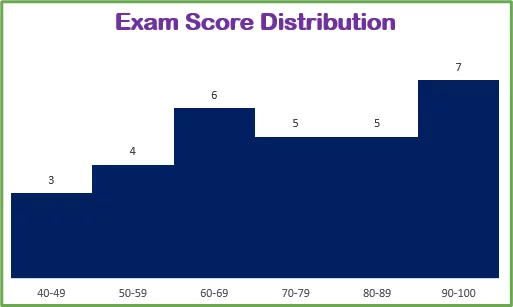
Why Use A Histogram?
Histograms are the primary choice for data analysis for several reasons. These include:
- Distribution visualisation: Histograms make it easy to visualise the trends and patterns within a continuous data tab, while other types of graphs, like bar charts, only show a comparison between different categories of data.
- Understanding the frequency of data ranges: Histograms are the preferred method for data analysis when the objective is to showcase and analyse the distribution of a data set instead of a single data point.
- Comparing large data sets: A histogram displays the amount of data points for each interval, bringing a large input range into a concise summary without misleading the viewer with individual data points.
Advantages And Disadvantages Of Histograms
Advantages
-
- A histogram chart can uncover patterns and distributions that would otherwise be concealed within the heaps of data. Whether it’s analysing the most common test score or the number of employees present on each day of the week, we can uncover interesting insights into our surroundings with histograms.
- Histograms are trusted sources for data analysis, assisting analysts with identifying trends, important data points, and outliers to make informed decisions.
- As suggested above, histograms divide data into separate categories and display them in an easily digestible format. This is especially helpful when you’re juggling large amounts of data from an analysis group.
Disadvantages
-
- Histograms focus on frequency distribution, overlooking the individual values that create the entire picture. This may leave you with a shallow understanding of a data set.
- While we talked about how histograms can simplify complex data, they’re also known to oversimplify the underlying meaning of a situation. This limits our understanding of the data.
- Using histograms means grouping the data into categories. Now, the person constructing the histogram may use different grouping choices according to their taste. This can potentially alter the results, which highlights the importance of practising caution when working with histograms.
Visualisation is a great way to make your information more accessible, check out our guide to creating data models in Excel here for more.
Histogram Troubleshooting
While histograms play a prominent role in data analysis, it’s essential to understand the limitations and challenges you can encounter before you start working with them. These include:
Data Skewness
Data skewness refers to asymmetry in a distribution of data enclosed in a data set and is the most likely limitation affecting the credibility of histograms.
For instance, if you’re working with a data set representing a country’s population with a large amount of old people, the histogram will be skewed to the right. This may create a misleading impression that the population’s average age is high, even if that’s not the case.
Bin Size Selection
The bin range selection depends on the person creating the histogram and can significantly impact the chart output. Where choosing too many bins can overamplify the meaning of the data, selecting too few bins can cause the meaning to be overlooked.
Data Outliers
Outliers are bits of data that don’t align with the majority of the data points. Including them in the data range can noticeably affect the histogram chart’s skewness shape.
For example, if your input data illustrates the salaries of employees in an organisation, recording the CEO’s salary in the data pool can immensely skew the distribution of the histogram.
Conclusion
By now, you may be amazed at how easy it is to create a histogram, even if your Excel version isn’t up to date.
The guide above presents the quickest and most straightforward solution to creating an Excel histogram from any data set.
While we have seen how working with histograms can be risky given its limitations, you can’t deny its importance in data analysis.
From understanding the variability and central tendencies of data from a single glance to detecting outliers and analysing the overall structure of data, once you are aware of the challenges, histograms can be reliable tools in decision making for statistical analysis.
For more on Excel and it’s more niche uses, check out this article on Excel for SEO training.
